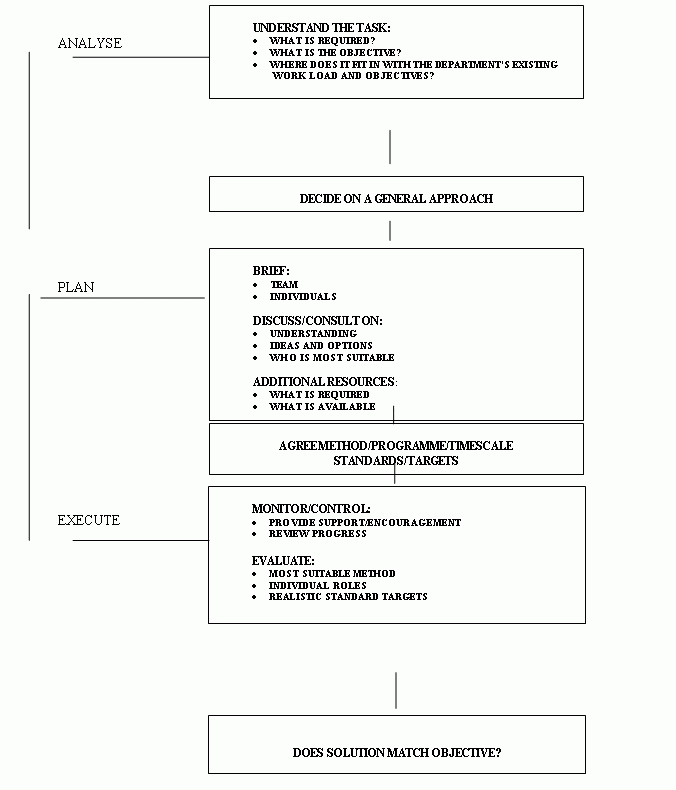HRM. Achieving the task
Category: HRM
The difference between a team and a group of people is that a team has some common purpose, goal or objective. If a work team does not achieve the required result or a meaningful result it will become frustrated. Organisations have a task to make a profit, to provide a service, or even to survive. So anyone who leads or manages others has to achieve results: production, marketing, selling, etc. Achieving objectives is a major criterion of success.
When considering a task there is a simple step by step approach for the leader to follow which is based on the mnemonic “ACCIDENT”. This stands for:
| AIM | — Establish the aim. What do you want to achieve by completing the task? |
| CONSTRAINTS | — Recognise the constraints on resources you may come across. |
| COMMUNICATE | — With staff, the Manager, other teams. Let everyone know what is happening. |
| IDEAS | — Welcome new ideas from all areas. Ideas can come from management, your team and you. |
| DECIDE YOUR PLAN
OF ACTION |
— Always remember to plan ahead. |
| ESTABLISH PRIORITIES | — Ensure that you identify the main objectives/priorities. |
| NOTE PROGRES AND REVIEW | — You may find it necessary to review the task and the way in which it is being carried out. |
| TARGETS | — Try to meet agreed targets. If targets are not met find out why. |
Build up and co-ordinate a team
A leader is responsible for developing and maintaining his staff, so that they form an effective team who will work together to achieve a common aim. To achieve the departmental and organisational objectives the team needs to be held together. People need to be working in a co-ordinated fashion in the same direction, teamwork will ensure that the team’s contribution is greater than the sum of its parts. Conflict within the team must be used effectively; arguments can lead to ideas or to tension and lack of co-operation.
Develop and satisfy the individuals within the team
Within working groups individuals also have their own set of needs. They need to know what their responsibilities are, how they will be needed, how well they are performing. They need an opportunity to show their potential, take on responsibility and receive recognition for good work.
A leader can establish the needs of the individuals within the team by ensuring he carries out the following steps:
Find out what motivates the different people in the team. Getting to know the staff will lead to a greater understanding of any problems that they may have in future.
Find out what the individual expects from you by encouraging feedback.
Develop and coach individuals by recognising their strengths and making the most of them. Also point out their weaknesses and ways in which they can overcome them. In doing this the leader will achieve the best possible results.
Attend to personal problems and grievances.
Remember to offer praise, recognition and status to a job well done.
It is very rare to find a team that is content all of the time. If an individual does become disgruntled over a particular matter, the leader should listen to his opinions and discuss the problem. By dealing promptly with the problem it will help improve the morale of the team members.

